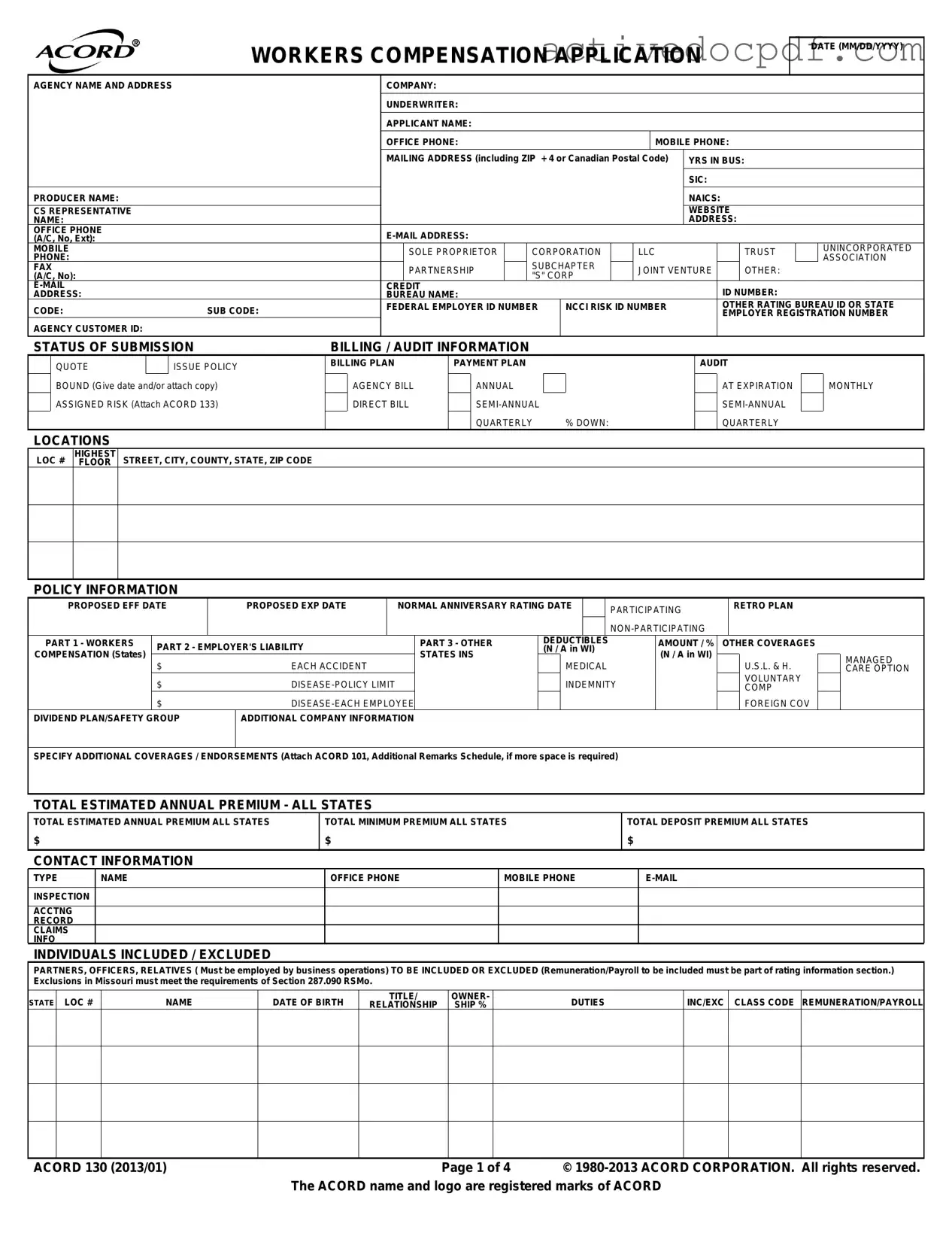The Acord 130 form serves as a Workers Compensation Application. It collects essential information from businesses seeking workers' compensation insurance. This information helps insurance companies assess risk and determine appropriate coverage and premiums. The form includes details about the business, its operations, and employee classifications, which are crucial for underwriting decisions.
Any business that wishes to obtain workers' compensation insurance should complete the Acord 130 form. This includes sole proprietors, corporations, partnerships, and limited liability companies (LLCs). Regardless of the business structure, if employees are present, the form is necessary to ensure compliance with state workers' compensation laws.
The form requests a variety of information, including:
-
Agency name and address
-
Applicant's name and contact details
-
Business type (e.g., corporation, LLC, partnership)
-
Years in business and industry classification (SIC and NAICS codes)
-
Estimated annual payroll and number of employees
-
Prior carrier information and loss history
-
Details about business operations and any hazardous activities
Providing accurate and complete information is vital for obtaining the correct coverage and premium rates.
The information submitted on the Acord 130 form directly influences the insurance premiums. Insurers evaluate factors such as the type of business, employee classifications, and prior loss history to determine risk levels. A higher risk may lead to increased premiums, while a lower risk could result in discounts. Accurate reporting of payroll and employee duties is essential for fair premium assessment.
What is the significance of the loss history section?
The loss history section of the Acord 130 form provides insurers with insight into the applicant's past claims and losses. This information is crucial for assessing the likelihood of future claims. A history of frequent or severe claims may indicate higher risk, potentially leading to higher premiums or difficulty obtaining coverage.
What should be included in the business description?
The business description should clearly outline the nature of the operations, including:
-
Type of products or services offered
-
Processes involved in manufacturing or service delivery
-
Any subcontracting arrangements
-
Specific risks associated with the business activities
A thorough description helps insurers understand the business better and assess the associated risks accurately.
Yes, certain states may have additional requirements or variations in the application process. For example, some states may require specific disclosures regarding prior coverage or unique business activities. It is important to consult with a local insurance agent or broker to ensure compliance with state-specific regulations when completing the Acord 130 form.
Providing incorrect information on the Acord 130 form can have serious consequences. It may lead to denied claims, increased premiums, or even cancellation of the policy. Insurers rely on the accuracy of the information provided to make underwriting decisions. Therefore, it is crucial to review all entries carefully before submission.
